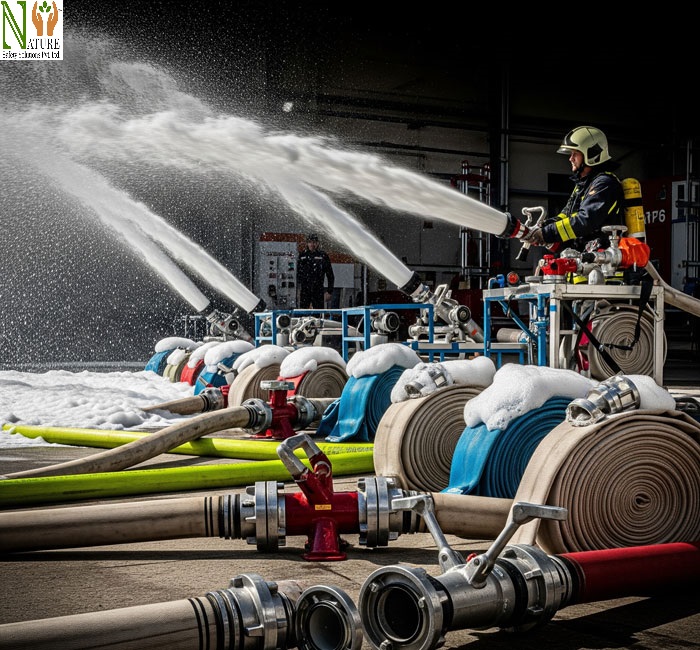When flames erupt, the tools firefighters choose can make the difference between saving lives or losing everything. Among all the equipment in their arsenal, fire hoses and foam systems stand as the backbone of firefighting operations.
These tools have evolved over decades, providing powerful and effective ways to control and extinguish fires in both residential and industrial settings.
Why Fire Hoses and Foam Systems Matter
Fire hoses and foam systems are essential because they provide the primary means of applying water or fire-retardant substances to a blaze. While water remains the most widely used fire suppressant, it’s not always enough — especially when tackling oil, fuel, or chemical fires.
Foam systems enhance firefighting efforts by smothering flames and cutting off the oxygen supply, ensuring that even stubborn fires are brought under control.

Fire Hoses: The First Line of Defense
Fire hoses are flexible, high-pressure tubes designed to deliver large volumes of water or foam directly to the fire. They are lightweight, durable, and built to withstand intense heat and rough handling on firegrounds.
Types of Fire Hoses
Attack Hoses:
These are used to fight fires directly, carrying water from the pump to the nozzle. They are designed for high-pressure operation and mobility.
Supply Hoses:
These carry water from a hydrant or another water source to the fire engine. They have a larger diameter to ensure an uninterrupted water supply.
Forestry Hoses:
Used for wildland and forest fires, these are lightweight and easier to maneuver in rough terrain.
Booster Hoses:
Made of rubber, booster hoses are often used for smaller fires or during mop-up operations because of their durability and ability to deliver steady water flow.
How Fire Hoses Work
The power of a fire hose lies in its water pressure. Water is pumped from the fire engine or hydrant and travels through the hose at a speed and pressure strong enough to knock down flames.
Adjustable nozzles give firefighters control over spray patterns, allowing them to switch between a concentrated stream and a wide mist depending on the fire’s behavior.
Foam Systems: Tackling Specialized Fires
While water is effective for wood, paper, and fabric fires (Class A), it is not suitable for flammable liquid or oil fires (Class B). Foam systems are designed for these scenarios.
How Foam Works
Firefighting foam forms a blanket over the fire, cooling the surface and cutting off oxygen — one of the elements in the fire triangle (heat, fuel, oxygen). It also prevents flammable vapors from reigniting.
Types of Firefighting Foam
Aqueous Film Forming Foam (AFFF):
Ideal for oil and fuel fires, AFFF spreads quickly and creates a thin film to smother flames.
Alcohol-Resistant Foam:
Used for fires involving alcohols and polar solvents that would otherwise break down regular foam.
Class A Foam:
Designed for wildfires and structural fires, it helps water penetrate deep into burning materials.
High-Expansion Foam:
This foam expands rapidly and is used in enclosed spaces such as warehouses or airplane hangars.
The Combination of Hoses and Foam
Fire hoses often deliver foam as well as water. Fire engines are equipped with foam proportioning systems that mix foam concentrate with water before it is pumped through the hose. This allows firefighters to switch between water and foam quickly, depending on the fire they are fighting.
Maintenance and Safety
Fire hoses and foam systems require regular testing and maintenance. Hoses are checked for leaks, tears, and pressure handling, while foam concentrates are inspected for effectiveness. Proper maintenance ensures that these tools work flawlessly during emergencies.
The Future of Fire Hoses and Foam Systems
Modern advancements are improving the efficiency of hoses and foam technology. Lightweight synthetic hose materials, eco-friendly foams, and smart nozzle systems are now being developed to increase firefighting efficiency while reducing environmental impact.
Also read :-
